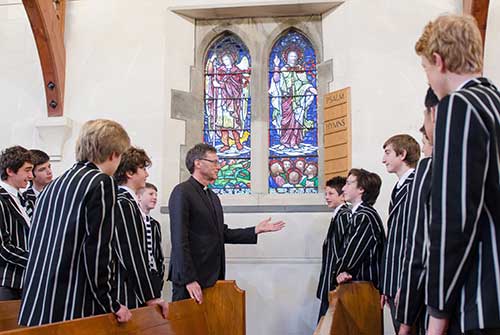
This is from an article, written by me, which first appeared in our diocesan magazine Anglican Life (August-September 2017).
Part 1 (which I recommend you read first) challenges a common image of God and prejudices about the nature of truth. Part 2 introduces the apophatic approach to complement the common cataphatic one. This post concludes the article.
Young people need to see this lived out in the lives of those who have been on the spiritual journey much, much longer. This is not significantly different to the growth that they go through in other areas of human development. We grow from our childish viewpoint that the Moon follows me, through the realisation that the Moon is a satellite around the planet, to the more complex (and possibly more beautiful representations) which have the Sun racing around the Galaxy with the planets and their satellites dragged in its train. Each perspective has its own merit. Relativity allows us, in fact, to express everything from the perspective of the Moon, making the Moon the point of view.
As another example, when we are little, we assume that solids are, well, solid. It is only as we mature that we discover that solids, in fact, are mostly empty space. Within this mostly-empty-space are protons, electrons, and neutrons. And we might visualise those as if they are tiny, tiny marbles. But, as we mature further, we discover that assuming an electron is like a particle is false: an electron acts just as often as if it were a wave. We learn about Heisenberg’s uncertainty principle: no matter how accurate our instruments, we will never be able to measure both the velocity and the position of a particle. We meet up with Schrödinger’s cat: confronting the concept that a reality, as it were, comes into existence only when it is observed.
The recovery and renewal of the apophatic, which I am calling for, can dovetail into the popularity of Mindfulness, an increasingly prominent practice amongst young people. Mindfulness tends to look to eastern religions such as Buddhism. This searching elsewhere often happens because we have neglected our own tradition. We have a rich Christian prayer tradition which does not assign images to God. The Christian purpose, in fact, goes deeper. It isn’t measured or described by improved results, resilience, or even being peaceful. Christian prayer and meditation, and with it, belief and life, have the goal of growing in union with God.
Finally, the digital world and ever-present cell phones immerse young people in a culture of overstimulation. The danger for many young people is that we can perennially distract ourselves from the deep question that lies in our heart. Our schools, our youth groups, our parishes, and our media presence need to challenge this, but also engage young people in a way that provides contemporary responses for the new context in which younger generations find themselves.
If you appreciated this post, do remember to like the liturgy facebook page, use the RSS feed, and sign up for a not-very-often email, …
photo by: Melissa Hogan



